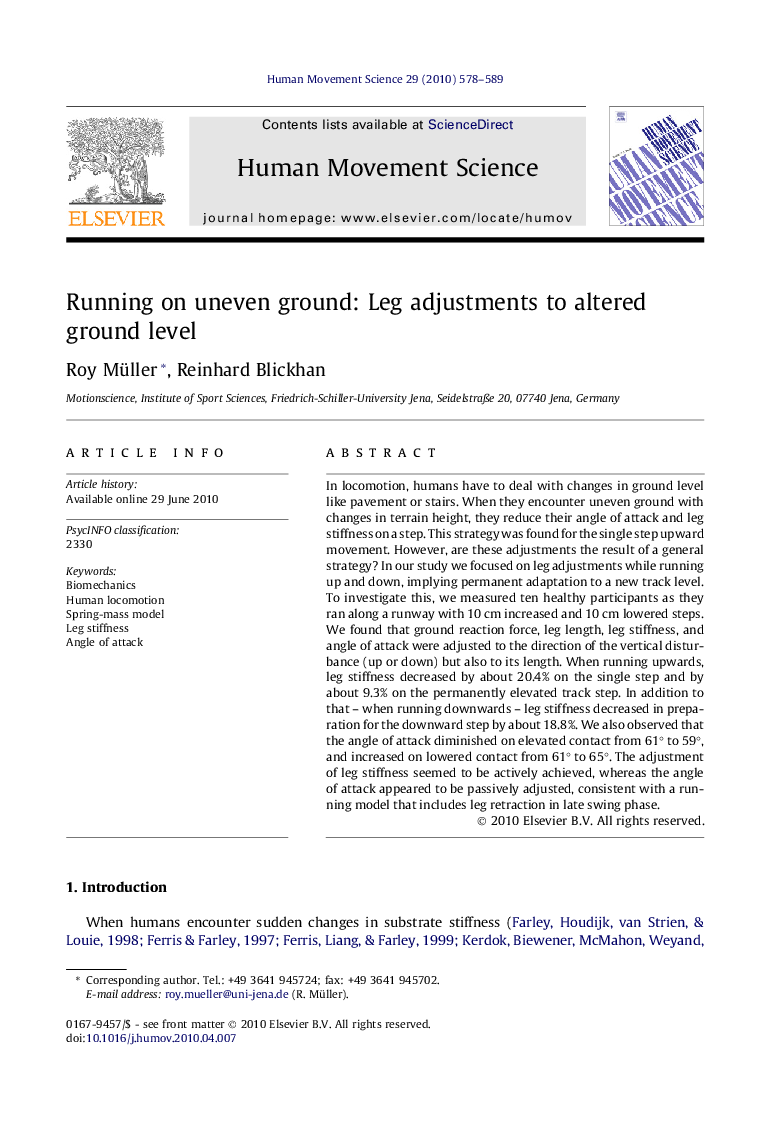| Article ID | Journal | Published Year | Pages | File Type |
|---|---|---|---|---|
| 928698 | Human Movement Science | 2010 | 12 Pages |
In locomotion, humans have to deal with changes in ground level like pavement or stairs. When they encounter uneven ground with changes in terrain height, they reduce their angle of attack and leg stiffness on a step. This strategy was found for the single step upward movement. However, are these adjustments the result of a general strategy? In our study we focused on leg adjustments while running up and down, implying permanent adaptation to a new track level. To investigate this, we measured ten healthy participants as they ran along a runway with 10 cm increased and 10 cm lowered steps. We found that ground reaction force, leg length, leg stiffness, and angle of attack were adjusted to the direction of the vertical disturbance (up or down) but also to its length. When running upwards, leg stiffness decreased by about 20.4% on the single step and by about 9.3% on the permanently elevated track step. In addition to that – when running downwards – leg stiffness decreased in preparation for the downward step by about 18.8%. We also observed that the angle of attack diminished on elevated contact from 61° to 59°, and increased on lowered contact from 61° to 65°. The adjustment of leg stiffness seemed to be actively achieved, whereas the angle of attack appeared to be passively adjusted, consistent with a running model that includes leg retraction in late swing phase.
